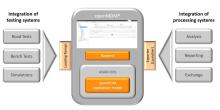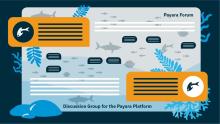Community News
Eclipse Foundation Gears Up the Software-Defined Vehicle - The New Stack
Check out the Oniro Track from EclipseCon 2021
3 Jakarta EE talks you won’t want to miss at JakartaOne Livestream 2021
Collaborate Better with Eclipse Che: The Kubernetes-native IDE for Dev Teams (Video)
Capella Days 2021 is incoming, it's time to save your spot!
This annual conference will highlight MBSE case studies by Capella users: Thales, Siemens, UK Atomic Energy Authority, ASML, DB Netz AG, Stille AB, Instituto Tecnológico de Aeronáutica, Politecnico di Milano, The Norwegian University of Science and Technology.

SD Times Open-Source Project of the Week: Software-Defined Vehicle
Eclipse JKube 1.5.1 is now available!
Eclipse Foundation launches open source collaboration around software-defined vehicles
The Eclipse Foundation Partners with China's OpenAtom on a New Operating System
Help Us Define the First True Initiative for Open Source Software-Defined Vehicles
Eclipse openMDM Working Group held a technical discussion with the prostep ivip FDX Working Group
An important step towards virtual vehicle development: The openMDM working group presented solutions for integrated data management to representatives of the Prostep ivip FDX working group.

Eclipse Dirigible - Low-Code Mobile Apps with NativeScript (Tutorial)
Introducing Oniro: A Vendor Neutral, Open Source OS for Next-Gen Devices
EclipseCon 2021 is underway!
TU Munich wins $1M Indy Autonomous Challenge (with Eclipse projects on board), open sources EVERYTHING
All 9 IAC teams representing 21 universities that made it through to the final IAC race ran ROS 2 (Foxy) with Eclipse Cyclone DDS and Eclipse zenoh V2X. The winning team used ROS2 Galactic Patch Release 1 with built-in Eclipse iceoryx in addition and recorded the fastest 2-lap average speed of 218.78 km/h, 60.77 m/s on the famous Indianapolis Motor Speedway Oval.
What Cloud Developers Want - Blog Post
Eclipse Foundation Projects are OpenChain Conformant
SUMO User Conference 2021: Summary and Videos
With over 350 participants from 36 different countries and 28 presentations, we were able to gain an insight into various topics related to mobility simulation and modeling, using open source tools and in particular with our Eclipse SUMO simulation software.
Join the New and Improved Payara Forum!
We have decided on this new location as it provides a better user experience, with a clear layout, the ability to group discussion threads within categories, and no need to use your email address.

